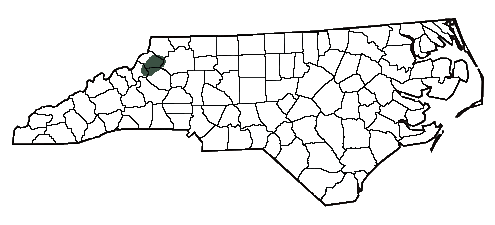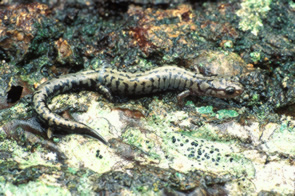-gmc-6-21-2008-Mt Rogers, VA.jpg)
Plethodon welleri
Photo by Grant Connette
Listed: State Species of Special Concern.
Description: The Weller’s salamander is an unmistakeable salamander which has a black body covered with brassy blotches. In North Carolina, the belly tends to be uniformly dark. Hatchlings may initially lack the brassy pigmentation of adults, but they begin developing brassy spots on the back within days of hatching.
Habitat/Range: An isolated population of Weller’s salamanders occurs in an extremely small area in the mountains of North Carolina. This rare species is primarily associated with wet, high elevation spruce-fir forests. Individuals may be found on the forest floor under rocks, logs, and other cover objects.
Diet: Weller’s salamanders emerge on wet or humid nights to forage for a wide variety of invertebrates.
Reproduction: Weller’s salamander nests have seldom been observed, but eggs appear to be laid during the summer. The female will remain to guard the eggs until they hatch. Weller’s salamander hatchlings do not go through an aquatic larval stage. Instead, when young salamanders emerge from their eggs they look like miniature adults.
Miscellaneous: Weller’s salamanders can release noxious, sticky skin secretions which are used to deter predators. Because these rare salamanders are almost entirely associated with high elevation spruce-fir forests, it is unknown how this species will react to the current die-offs of these forests in the southern Appalachians.

The shaded region represents the range of Weller's salamander in North Carolina.

-gmc-6-21-2008-Mt Rogers, VA.jpg)
-gmc-6-21-2008-Mt Rogers, VA.jpg)
Photo by Grant Connette
-gmc-6-21-2008-Mt Rogers, VA.jpg)

Photo by Grant Connette
Photo by D Dennis
